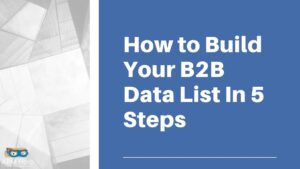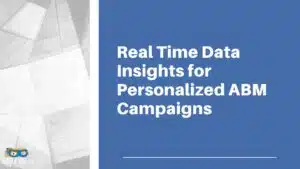In today’s digital age, personalized communication has become crucial to successful marketing strategies.
Account-Based Marketing (ABM) has emerged as a popular approach for B2B marketers to target high-value accounts and engage decision-makers with tailored messaging.
However, achieving true personalization at scale is daunting, and marketers often need help to deliver relevant content to the right people at the right time.
Intent data can play a pivotal role in helping marketers hyper-personalize their ABM efforts.
By providing insight into a prospect’s behavior and interests, intent data allows marketers to create targeted campaigns that resonate with their audience.
In this blog post, we will discuss the significance of intent data in ABM and how it can enhance your personalization efforts.
What is Intent Data?
Intent data is information about a person or company’s online behavior that indicates their potential interest in a particular product or service.
This data is collected from various sources, such as website visits, search queries, and social media activity.
In account-based marketing (ABM), intent data can be used to personalize marketing and sales efforts for specific target accounts.
By analyzing data, marketers can understand the topics and potential content customers are interested in and tailor their messaging and content to match those interests.
For example, suppose a company is selling marketing automation software and sees that a target account has been researching topics related to marketing automation. In that case, it can use this information to personalize its marketing and sales efforts.
They might email the target account a personalized subject line related to marketing automation or create targeted content that addresses the specific pain points of the account linked to marketing automation.
Overall, intent data is a powerful tool for personalizing ABM efforts and increasing the chances of converting target accounts into customers.
Identifying Potential Leads
Intent data can help identify target accounts showing a higher interest level in a particular product or service, making it easier to identify potential leads for ABM.
Here are a few examples of how B2B marketers can pinpoint potential leads by monitoring intent data:
Website behavior: By tracking website behavior, marketers can identify which pages or topics are viewed most frequently by a particular company or individual.
For example, if a target account spends a lot of time on a company’s pricing or comparison page, it may indicate a strong interest in the product or service.
This data can be used to personalize messaging and content for the account and prioritize it as a potential lead.
Social media activity: Monitoring social media activity can provide insights into what topics or content a target account engages with online.
For example, if a target account follows a competitor’s social media account, it may indicate an interest in similar products or services.
This data can be used to create targeted social media campaigns or personalized messaging.
Search queries: By analyzing the search queries of a target account or individual, marketers can identify what topics or keywords they are interested in.
To give you an idea, let’s use this scenario. If a target account is searching for “cloud computing solutions,” it may indicate a strong interest in cloud-based services.
This data can be used to create personalized content or messaging focused on cloud computing solutions.
Email engagement: Tracking email engagement can provide insights into what topics or content a target account is interested in.
For instance, if a target account frequently opens and clicks on emails related to a specific product or service, it may indicate a strong interest in that offering. This data can be used to create targeted email campaigns or personalized messaging.
Personalizing Content
Intent data can be used to create highly personalized content for target accounts based on their specific interests and behaviors.
By analyzing a target account’s email engagement, B2B marketers can identify the topics or content that interest them.
They can then use this information to create personalized email campaigns that address the target account’s specific pain points or interests.
For example, if a target account frequently engages with emails related to “account-based marketing,” a B2B marketer can create a personalized email campaign focused on ABM solutions and how they can help the account.
Hence, using these data to personalize content can help B2B marketers create more relevant and engaging campaigns that resonate with their target accounts, ultimately increasing the chances of conversion.
Tailoring Messaging
By analyzing intent data, marketers can understand the messaging and language that will resonate with a particular target account and use this information to tailor their messaging accordingly.
Using it to tailor messaging to a target audience is a game-changer for B2B marketers because it allows them to create highly personalized and relevant content that speaks directly to the needs and interests of their target accounts. Here are a few reasons why it’s such a powerful strategy:
Increased engagement: When messaging is personalized and relevant to the recipient, it is more likely to capture their attention and encourage them to engage with the content. It can increase engagement rates, such as higher email open rates, click-through rates, and website engagement.
Higher conversion rates: When messaging is tailored to the specific pain points, needs, and interests of a target account, it is more likely to resonate with them and inspire them to take action. It can lead to higher conversion rates, such as more qualified leads, opportunities, and closed deals.
Improved customer experience: When messaging is personalized and relevant, the B2B marketer has taken the time to understand the target account’s specific needs and interests. It can help build trust and strengthen the relationship between the marketer and the account, leading to a better customer experience overall.
Competitive advantage: Using intent data to tailor messaging is still a relatively new and emerging strategy in B2B marketing. By adopting this approach early on, B2B marketers can gain a competitive advantage by providing a more personalized and relevant experience to their target accounts.
Using intent data to tailor messaging to a target audience can help B2B marketers stand out, improve engagement and conversion rates, and create a better overall customer experience.
Enhancing Account Segmentation
Intent data can help improve account segmentation by providing insights into different target accounts’ specific interests and behaviors, allowing marketers to create more targeted campaigns.
It can help B2B marketers enhance account segmentation in several ways:
Identifying high-value accounts: By analyzing intent data, B2B marketers can identify accounts demonstrating solid signals of intent to purchase, such as high levels of engagement with relevant content. This information can be used to prioritize these accounts as high-value targets and create more personalized and targeted campaigns to engage them.
Segmenting accounts based on interests and needs: Intent data can help B2B marketers better understand the interests and needs of their target accounts, which can be used to create more targeted and personalized messaging. For example, if an account demonstrates strong intent around a particular product or service, the marketer can create a targeted campaign focused on that offering.
Identifying key decision-makers: Intent data can help B2B marketers identify which individuals within a target account demonstrate the most vital intent signals. This information can be used to prioritize outreach to these individuals and tailor messaging specifically to their needs and interests. B2B marketers can create more targeted and personalized campaigns, improve engagement rates, and increase the chances of conversion.
Optimizing Ad Targeting
By leveraging intent data, marketers can optimize ad targeting and retargeting efforts to reach the most relevant and engaged audiences, increasing the chances of conversion.
When companies have a good command of using these data, they can leverage it to optimize their ad-targeting tactics in several ways:
More precise targeting: By using it better to understand the interests and needs of their target audience, companies can create more precise targeting criteria for their ads.
It can help ensure that their ads are shown to the most relevant and engaged audience, leading to higher engagement and conversion rates.
Customized messaging: Using this data, companies can create more customized messaging that speaks directly to the needs and interests of their target audience. It can help improve ad relevance and increase the likelihood of engagement.
Audience expansion: By using intent information to identify similar audiences to their current customers, companies can expand their ad targeting efforts to reach new potential customers with similar interests and needs. It can help increase brand awareness and lead generation.
Dynamic ad creative: To better understand the interests and needs of their target audience, companies can create dynamic ad creative that changes based on the individual’s browsing behavior or intent signals with the help of this data. It can help improve ad relevance and increase the likelihood of engagement.
In conclusion, intent data is a powerful tool for B2B marketers looking to improve their account-based marketing efforts.
Using it to understand the interests and needs of their target accounts, marketers can create more personalized and relevant messaging, improve engagement rates, and increase the chances of conversion.





